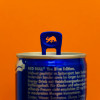The region of the brain used to recognise faces develops in a way that defies conventional neurological wisdom, a new study from the US has found...
Uncharacteristically, the fusiform gyrus, which is the brain area reserved for decoding faces in humans, appears to grow as we age, Stanford University scientist Jesse Gomez and his colleagues have discovered.
Writing in Science, the team show that when brains scans from a group of 22 children and 25 adults are compared, the brain regions concerned with face recognition are relatively much more developed in the adults.
Corresponding comparisons of brain areas that process place and location stimuli, however, showed no difference between the two groups proving that the effect is not just a consequence of general brain development.
The team used highly sensitive MRI techniques to measure both the volume and the composition of brain tissue responding to face stimuli in their subjects. They also looked at post-mortem specimens to see whether the functional data picked up by the scanner was reflected in structural changes in the underlying brain matter.
Face-recognition areas in adult brains, they found, were more grey-matter rich and showed much higher connectivity between nerve cells than the corresponding regions in juveniles. This surprising result flies in the face of conventional thinking, which suggests that the brain learns by selectively pruning away connections between nerve cells.
Over time, this process of refinement was thought to optimise the speed and specificity of signalling.
The fact that this is clearly not the case when it comes to faces suggests that brain development may be more locally complex than we first thought. Or, as Gomez and his colleagues conclude in their paper, these findings "suggest that improvements in behaviour are a product of an interplay between structural and functional changes in the cortex."










Comments
Add a comment